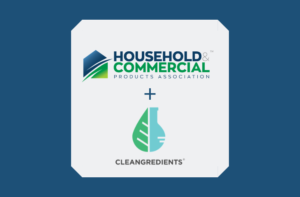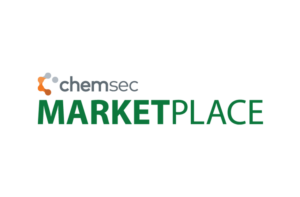Currently, no federal requirements exist for disclosing ingredients in cleaning products. However, new state regulations in California and New York will enact requirements, increasing transparency both for residents of these states and for others who will be able to access ingredient disclosure information.
In October, California Governor Jerry Brown signed SB 258, the Cleaning Product Right to Know Act of 2017, which will require ingredient labeling on product labels and online for cleaning products sold in the state. The online disclosure requirements will apply to products sold on or after January 1, 2020, while the on-label disclosure requirements will apply starting January 1, 2021. Disclosure requirements for certain chemicals on a Prop. 65 list will not come into effect until 2023.
Manufacturers and private label distributors of subject cleaning products will have two options to comply with the on-label disclosure portion of the law:
- List all intentionally-added ingredients that are included on one of 22 designated lists specified in the law, and list each fragrance allergen included on Annex III of the EU Cosmetics Regulation No. 1223/2009, when present at a concentration of 100 ppm or more; OR
- List all intentionally-added ingredients in the designated product, unless withheld as confidential business information (CBI), and include a statement that reads “Contains fragrance allergen(s)” when a fragrance allergen on Annex III of the EU Cosmetics Regulation No. 1223/2009 is present at a concentration of 100 ppm or more. If this compliance option is selected, fragrance ingredients and colorants may be listed on the product label as “fragrances” or “colorants”, respectively. Note that intentionally-added ingredients that are on a designated list or fragrance allergens specified in the EU Cosmetics Regulation may NOT be withheld as CBI.
Additionally, manufacturers and private label distributors are required to list on their website (among other information):
- All intentionally-added ingredients not withheld as CBI (with the exception of certain fragrance ingredients present at a concentration of less than 100 ppm and not on a designated list or identified as fragrance allergens);
- Nonfunctional constituents present at concentrations of 100 ppm or more (lower thresholds apply for 1,4-dioxane and chemicals subject to Prop 65 warnings);
- CAS numbers for disclosed ingredients and nonfunctional constituents, when available and not withheld as CBI; and
- The functional purpose of each ingredient.
California is not the only state with new ingredient disclosure requirements coming into effect. In April of this year, New York Governor Andrew Cuomo announced that that state would require manufacturers of household cleaning products sold in New York to disclose the chemical ingredients of those products on their websites. The New York regulation is authorized by a law passed in the 1970s, but the provision requiring disclosure of cleaning product ingredients was never enforced until the nonprofit Earthjustice brought it to the attention of state regulators by taking major manufacturers to court.
A draft disclosure certification form and guidance document was published earlier this year for public comment, but has not yet been finalized. Under the draft guidance, ingredients meeting the following criteria are required to be disclosed on the manufacturer’s web site:
- All ingredients intentionally added to a product, including those present in trace quantities, unless withheld as CBI.
- All ingredients, impurities, or contaminants present as an unintended consequence of manufacturing above trace quantities, where the manufacturer knows or should reasonably know of their presence.
- All ingredients, impurities, or contaminants present in trace quantities as an unintentional consequence of manufacturing, where the manufacturer knows or should reasonably know of their presence, where these ingredients have received a GreenScreen® for Safer Chemicals score of “Benchmark 1” or “Possible Benchmark 1,” or appear on one or more of the Priority Hazard Lists, or meet one or more of the specified Hazard Characteristics.
Like the California law, the draft New York guidelines require disclosure of CAS numbers, but also requires disclosure of the percentage of content by weight, the ingredient’s GreenScreen® benchmark, whether the ingredient is present as a nanomaterial, and the ingredient’s functional role in the product – provided this information is available, known, and not being withheld as CBI. Also, if an ingredient is present on a list of chemicals of concern or meets one of the hazard characteristics specified in the guidance, that information should be disclosed, even if the specific name or other information about the ingredient is withheld as CBI. The public comment period on the draft guidance closed on July 14, 2017, and final guidance has not yet been released.
The ingredient disclosure laws have generally received support from the NGO community, while reactions from industry and trade groups have been mixed. The California bill was co-sponsored by public health and environmental groups including Breast Cancer Prevention Partners, Environmental Working Group, Natural Resources Defense Council, and Women’s Voices for the Earth and received support from manufacturers and trade groups including Honest Company, WD-40, Seventh Generation, Procter & Gamble, SC Johnson, Reckitt Benckiser, Unilever, Ecolab, Givaudan, and the Consumer Specialty Products Association (CSPA).
However, some trade groups have criticized the New York requirements as outlined in the draft guidance. CSPA characterized them as “unworkable, costly and unscientific”, in contrast to the California law reached through consensus with a broad group of stakeholders. Others have noted ambiguity in the draft New York regulations – for example, it is unclear what a manufacturer should reasonably know about impurities or contaminants present in a product. Guidance for the New York requirements has not yet been finalized, so their final form remains to be seen.

Advocates say that these new ingredient disclosure requirements will particularly benefit workers such as janitors and housekeeping staff, who are exposed to chemicals in cleaning products on a daily basis. These workers are predominantly women and minorities, and are disproportionately exposed to hazardous chemicals in cleaning products.
Although the New York and California laws only apply to products sold in those states, they will likely have the effect of increasing cleaning product ingredient transparency for cleaning products sold in other states, as well. Both require disclosure of ingredients on manufacturers’ websites, meaning the information will be accessible to consumers, NGOs, and other interested parties even outside of the states where the laws apply. Plus, as is the case with California’s Prop. 65, which requires warning labels on certain products, manufacturers that sell products nationally may disclose ingredients on product labels nationwide, rather than creating a specific label for California only. As a result, users of cleaning products nationwide may soon have more information about the ingredients in the products they use.












